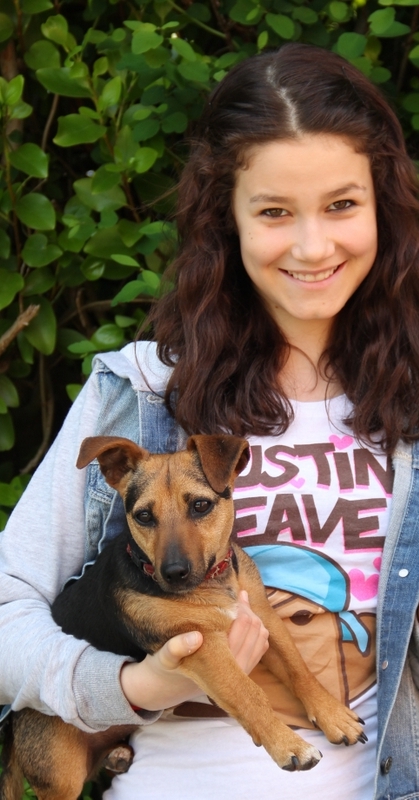Ella is my daughter, and Kiko is my own dog. The stimilant in chocolate is highly toxic to dogs, and every year, vets see dogs dying after eating too much chocolate, especially at Easter time. We’re more aware than most people of the risk of chocolate to dogs, but despite this, Kiko managed to catch us out.
A visitor to our house had brought us a box of chocolates as a gift. This was left temporarily on the kitchen table, out of reach of the animals, or so we thought. Kiko was in the kitchen, as is often the case; she’s usually calm and well-behaved.
We had only been gone for twenty minutes, but when we returned, the damage had been done. Kiko had managed to tear open the box of chocolates and was busily devouring the contents. We grabbed her but it was too late. There were 15 chocolates missing. I did a quick calculation: she’d eaten 150 grams (6 ounces) of milk chocolate.
The toxic dose of chocolate for dogs is around 50g of milk chocolate per kilogram of body weight. Plain chocolate is even more toxic, but fortunately there hadn’t been any of these in the box. Kiko weighs 6kg, so that means that the toxic dose for her would have been 300g, which was twice as much as she had eaten. She hadn’t taken enough to kill her, but she had still taken enough to cause a serious problem.
If I had done nothing, Kiko would have developed signs of chocolate poisoning, including an erratic heart rate, twitching and seizures. A severe dose of gastroenteritis would also have been likely. Emergency action was needed: I gave her an injection of a drug which immediately caused her to vomit.
I felt sorry for the poor dog as she regurgitated a thick sludge of pure chocolate, but my pity receded a little when she immediately tried to eat it again. It’s so easy to put human thoughts into a dog’s mind: of course she hadn’t learned from the episode, but it didn’t stop me from thinking that she ought to have.
Kiko was lucky that we discovered her so soon after she’d eaten the chocolates. Often the chocolate theft isn’t discovered till much later. An owner may not come home for several hours, by which time it’s too late to remove the chocolate by inducing vomiting. It’s still vital to take such animals to the vet, and there are measures that can be taken to limit further absorption of the chocolate toxins. Smaller animals are much more at risk than big dogs, because it’s much easier for them to go over the 50 gram per kilogram toxic dose.
One important fact for pet owners to realise is that the biggest danger doesn’t come from giving dogs occasional chocolate treats. A life threatening crisis is most likely when a hungry dog finds a chocolate stash. Dogs don’t have an “off” switch when it comes to eating chocolate. Most humans might eat three or four chocolates before feeling that they’ve had enough. A dog, in contrast, just goes on and on eating until all the chocolate has gone. If we hadn’t interrupted Kiko that day, she’d have kept going until she’d finished the whole box of chocolates.
Kiko made a full recovery, and we’ve learned that chocolate must always be kept not just out of her immediate reach, but out of her scrambling, climbing and jumping distance as well. And even when it’s wrapped and sealed, chocolate isn’t safe from the jaws of a chocolate-loving dog.
TIPS
- Chocolate is highly toxic to dogs
- The biggest risk happens when a dog finds chocolate that’s been left around the house

